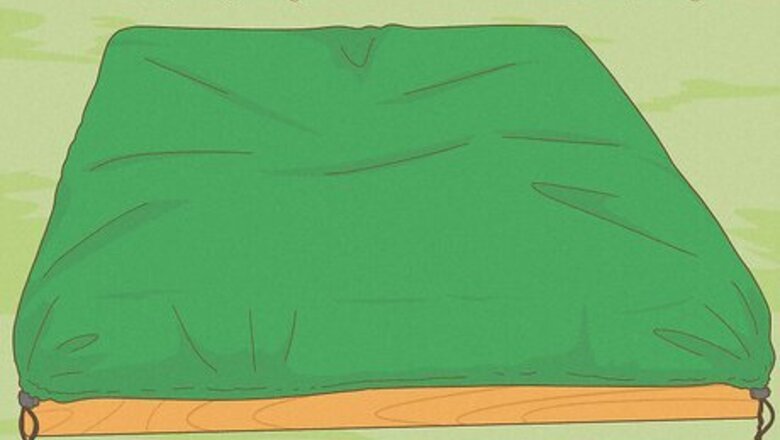
views
Preventing Contamination
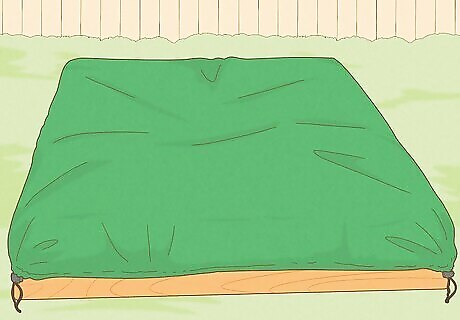
Keep it covered. The best way to keep unwanted visitors out of your sandbox is to keep it covered whenever it is not being used. A good cover will also keep your sand dry, which will prevent bacteria from growing in it. Many store-bought sandboxes come with covers. You can also purchase retrofit covers, or you can build one using plywood. If the sand gets wet while your children are playing, be sure to let it dry out before you put the cover back on.
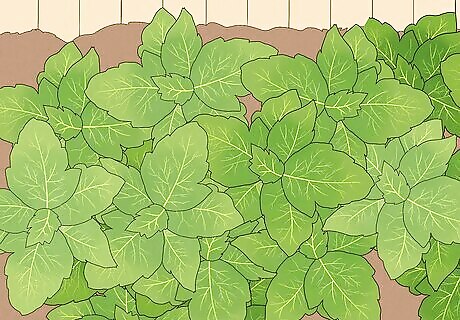
Plant a bug-repelling garden. You may not be able to keep every last bug out of your sandbox, but you can help keep lots of them away by planting insect-repelling plants near your sandbox and adding some natural ingredients to your soil. Mint and basil are both natural, non-toxic insect repellents. Mint also repels rodents. Be sure to cut off any flowers that grow on your plants, as they may attract bees. Try spreading out some coffee grounds in your garden to repel slugs and snails, and cinnamon to repel ants.
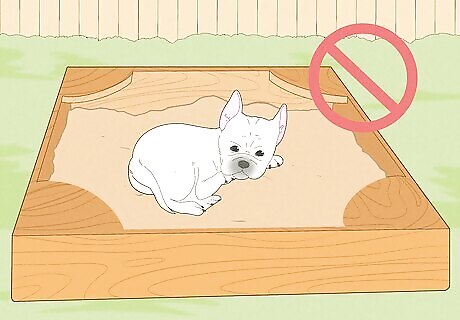
Don't let your pets play in the sandbox. Pets can easily mistake a sandbox for a litter box, so it's best to keep them out of the sandbox at all times, even when you are supervising. A single accident in the sandbox can contaminate it with a variety of harmful bacteria and parasites. For example, it is common for cats' feces to contain a parasite called toxoplasma gondii. Toxoplasmosis (the disease caused by the parasite) can cause serious problems for anyone with a weak immune system, such as young children and pregnant women. Keeping your pets up-to-date on all vaccinations can help prevent them from spreading disease if they do get into the sandbox.
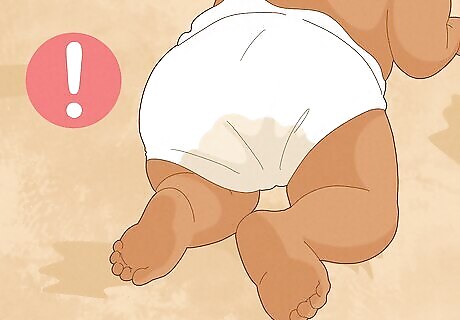
Watch out for leaky diapers. Your sand can also become contaminated by human feces, so try to make sure your little ones always have clean diapers on when playing in the sandbox. If the sand is contaminated by human feces, then children who play in it may contract E. coli. E. coli is especially dangerous for young children. If your children aren't potty trained, never let them play in the sandbox without wearing diapers.
Cleaning the Sandbox
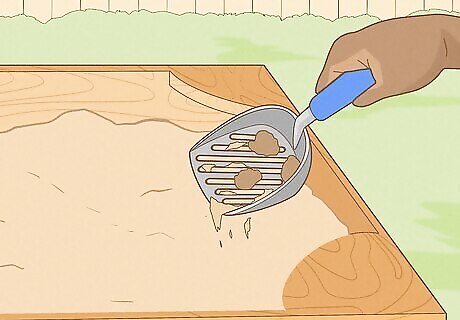
Clean the sand regularly. To make sure your sandbox stays clean, use a rake or a clean litter box scoop to sift through the sand. This will help you find any foreign objects or clumping sand, so you can remove them immediately. The frequency with which you should clean the sandbox depends on how often it is used. If it gets heavy use, clean the sand at least once a week.
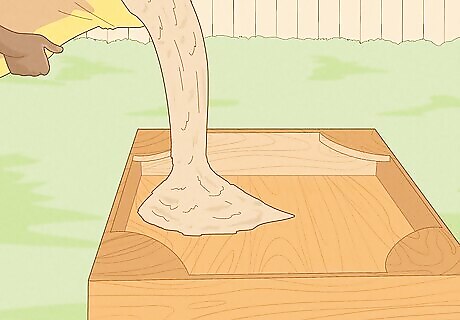
Replace the sand periodically. Because there is no way to keep the sand in your sandbox 100% clean, it's a good idea to replace the sand every one to two years.
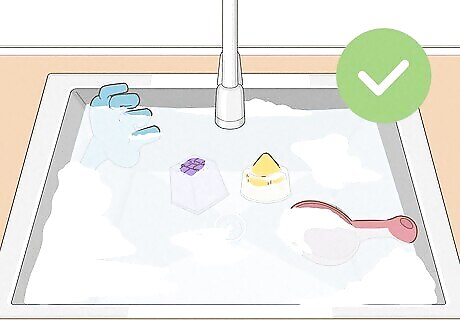
Wash sandbox toys. While you can't wash the sand in your children's sandbox, you can wash the toys that they play with in the sandbox, which can reduce their exposure to contaminants. Wipe down all toys with disinfectants to help keep them germ-free. If a toy can't be easily cleaned, don't let your children play with it in the sandbox.
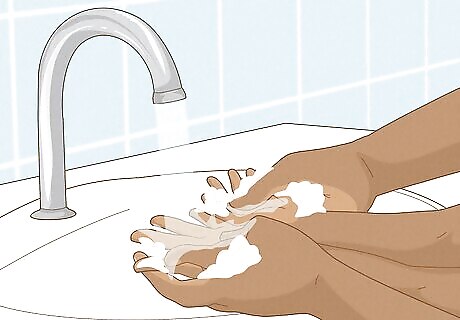
Wash your children's hands after playing. No matter how well you clean your sandbox, there is still some risk of contamination. For this reason, it's best to always thoroughly wash your children's hands as soon as they are done playing in the sandbox. This will help keep any germs that they picked up out of their mouths. Do not allow your child to eat or drink anything in the sandbox. Have your child wash his or her hands with soap and warm water for one to two minutes. Antibacterial soap is not necessary. Just use some regular soap.
Preventing Injury and Toxic Exposure
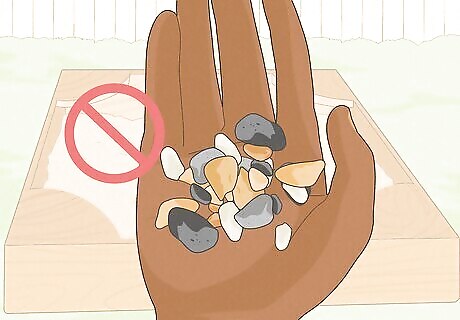
Avoid introducing gravel. Children can get scratched if coarse material like gravel finds its way into the sandbox. To prevent this from happening, avoid placing gravel near the sandbox, where it might be tracked in. Raking out your sandbox regularly should help you find any gravel that may have gotten in.
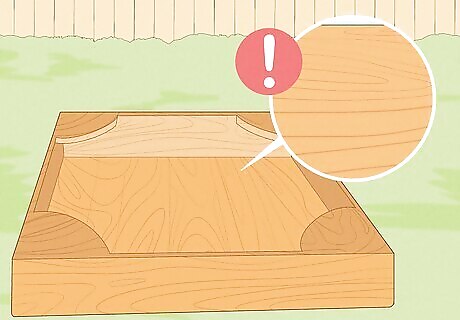
Prevent splinters. Many DIY sandboxes are built using wood, which can cause splinters. To avoid this, build your sandbox with the right type of wood, or avoid using wood altogether. Avoid railroad ties, which tend to splinter easily. If you want to use wood to frame your sandbox, use landscaping timbers, which are perfect for outdoor use. You can also use materials other than wood to build your sandbox, such as plastic lumber. If your wooden sandbox starts to splinter, sand it down to prevent injury. If you do get a splinter, then you should try to remove it with tweezers right away. Splinters can invite infection and they are harder to get out the longer you leave them in. If you cannot remove the splinter easily and it is red and causing pain after a few days, then see a doctor to get it cut out.
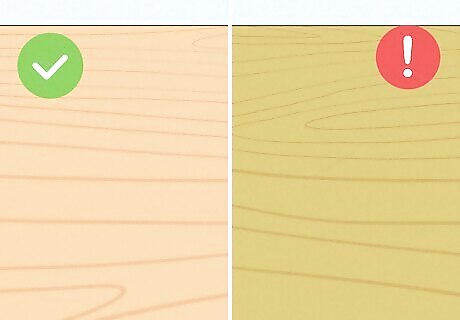
Avoid toxic wood. Wood that has been chemically treated for outdoor use is less susceptible to rot and insect damage, but some of the chemicals that are used to treat it are extremely toxic. Avoid any wood that has been treated with Chromated Copper Arsenate (CCA), which contains the toxic chemicals chromium, copper, and arsenic. It's easy to recognize chemically treated wood, as it typically has a greenish hue to it, although this does not necessarily mean that it has been treated with CCA. There are other chemicals that can be used to treat wood, which are safer than CCA. If you want to use pressure treated wood for your sandbox, opt for wood that has been treated with alkaline copper quaternary (ACQ) , borates, copper azole, cyproconazole, or propiconazole.
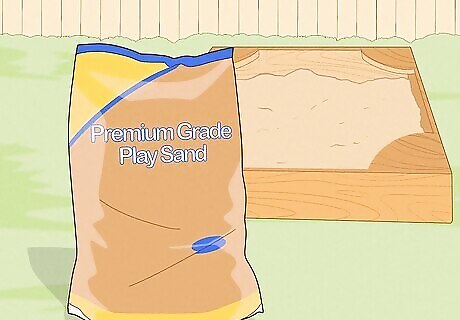
Use the right sand. Some sand that you can buy may contain minerals that are potentially harmful to children if inhaled. The biggest concern is tremolite, which is found in some play sand and may have adverse health effects similar to those of asbestos. To avoid this, only buy natural beach sand or river sand for your sandbox. Avoid any sand that contains crushed limestone, marble, or quartz, as these may also contain tremolite. Regardless of the material, avoid any sand that is overly dusty.




















Comments
0 comment